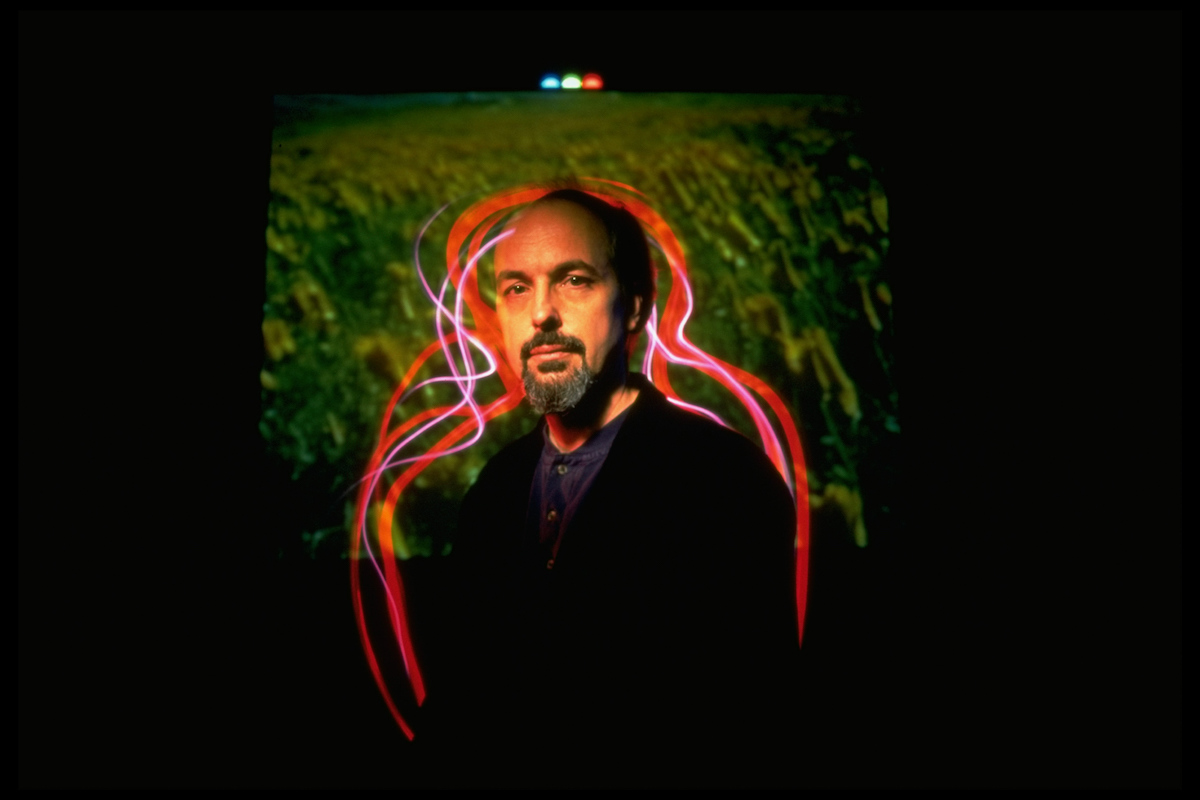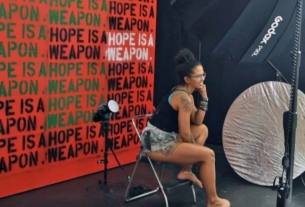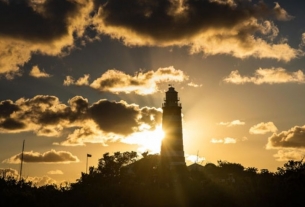From the white void, a black speck emerges. No more than a few pixels wide at first, this blob drifts closer and closer to us. As it slowly nears, the blob becomes a being whose legs and arms can be seen swaying in the wind, whose blustery din acts as this image’s soundtrack. Then, at the point when it is finally obvious that the blob is a human marching through a wind-swept plain, the man collapses to the ground and the shot ends.
This three-minute-long take appears in the 1979 video Chott el-Djerid (A Portrait in Light and Heat), an early masterpiece from Bill Viola, who died this past weekend at 73. To make the video, Viola journeyed to remote locales—snow-laden prairies of the US and Canada, a heat-warped desert in Tunisia—and captured the sights seen, rarely moving his camera at all. He’d sometimes spend days trying to get a shot, waiting until the weather aligned with the image he desired.
Viola wrote that his goal, in braving what he said felt like “the end of the world,” was to reach “the edge”—the place where perception breaks down and life starts to look very different. “It is like some huge mirror for your mind,” Viola wrote, adding, “Inside becomes outside. You can see what you are.”
The irony is that in Chott el-Djerid, and in many other works by Viola, there is not always much to see. Long takes of unsettled waters and shadowy figures are constants in Viola’s oeuvre. Abstract images composed of indefinable light and inky darkness recur as well, even in his later multiscreen video installations, which are more narrative-driven.



